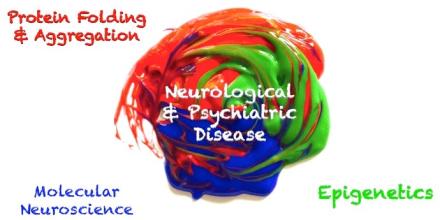
Mariana Torrente, Ph.D.
Assistant Professor
Department of Chemistry
Brooklyn College, CUNY
http://userhome.brooklyn.cuny.edu/Mariana.Torrente/Welcome.html
Finding your path to a fulfilling career
My parents are physicians, so growing up I thought I would have a career in medicine as well. However, in high school, I became involved in the Chemistry and Science Olympiads, which set me on the path towards a research career. In undergrad, I researched in organic chemistry, synthesizing fish pheromones. But, like many people, I wanted to do research with some link to disease, so I switched to studying protein degradation and regulation in a biology lab.
In grad school at Princeton University, I began a biochemistry project on protein chaperones. Unfortunately, in my third year, my advisor didn’t get tenure so I ended up joining the lab of a brand new professor, Dr. Benjamin Garcia, working on epigenetics. This experience, and others in grad school, taught me the value of improvisation, problem-solving, and a strong will in both my career and experiments. Things happen and you just have to make it work. Luckily, Dr. Garcia was a phenomenal mentor and I was able to complete my project and graduate in five years.
After completing my doctoral thesis, I secured a postdoctoral fellowship at Pennsylvania State University, where I was the recipient of an F32 NIH fellowship to support my work in the laboratory of Dr. Kent Vrana. In his lab, I learned a lot about science—I was studying binding partners of tryptophan hydroxylase 2, the rate-limiting enzyme in the synthesis of serotonin—but even more valuable was what he taught me about grant writing, politics, and other skills you need to succeed as an academic scientist.
At the time, my career aspiration was to be an industrial chemist, working for a pharmaceutical company to create new drugs. This seemed to merge my interests in chemistry, biology, and health quite well! During my postdoc, however, I had a bit of an identity crisis—the more I learned about working in industry, the more I realized it was not for me. I thought long and hard about how I got to where I was and I kept coming back to my college professors and how much they had influenced me. I decided I wanted to do research at an institution with a strong teaching mission.
The next logical step was additional training in teaching pedagogy through an NIH IRACDA program, PENN-PORT, at the University of Pennsylvania in the laboratory of Dr. James Shorter. Through this program I spent a year doing research, a year of teaching and research, and a third year of research. I learned a lot about the amount of time it takes to prepare a good lecture and how to tailor my teaching for different students.
It was during this time that I applied for and was awarded an NINDS Advanced Postdoctoral Career Transition Award (K22). The K22 facilitates the transition from postdoctoral fellow to independent researcher through two phases of funding: phase I covers up to three years of postdoctoral research and phase II funds the first years of an independent position.
When putting together my application, it was important to me to be honest about my career goals: I was committed to research, but I also wanted to serve undergraduates. Some of my mentors thought a strong teaching commitment might hurt my application, as the “typical” candidate who wants to work at an R1 institution might have only a few lectures a year. However, being honest helped me really tailor my application to my career development needs. Additionally, all K22 awardees must devote a minimum of 75% effort to research, regardless of institution, so I was the same as other applicants in that regard.
To activate phase II of the award, I joined the faculty of Brooklyn College (City University of New York; CUNY) as an assistant professor of chemistry. My research draws from my previous experience and unites the fields of epigenetics, molecular neurobiology, and protein folding. The K22 gave me the resources to “buy out” teaching time during the early years of my position and focus on getting my lab up and running. The award also led to additional honors, such as the Feliks Gross Award (the highest honor for an assistant professor at CUNY), and two internal research support awards.
Throughout my career, I have been keenly aware of just how rare it is for Hispanic women such as myself to achieve advanced levels of training in the sciences. Having had very close relationships with outstanding mentors, I know the importance of having good role models to rely on and to look up to in pursuing a career in science. I intend to “pay it forward” through a research career that will not only contribute to scientific knowledge, but also encourage others to pursue careers in science.
Current Research

My group seeks to understand the roles of epigenetic mechanisms and protein misfolding in the etiology of neurodegenerative and neuropsychiatric diseases.
Epigenetics in ALS: ALS is a progressive and fatal neurodegenerative disease. Both familial and sporadic ALS produce similar symptoms; familial ALS represents 5-10% of cases. Familial ALS has been linked to a multitude of genes. How can so many genes produce the same symptomatology? Could there be a role for epigenetics in the etiology of ALS? We hypothesize that epigenetic mechanisms—namely histone modifications—play a pivotal role in ALS. Our laboratory studies the genome-wide histone modification profiles relating to ALS using both immunoblotting and proteomics.
Protein misfolding in depression: Low levels of serotonin have been linked to psychiatric illness. Tryptophan hydroxylase (TPH) catalyzes the first and rate-limiting step in the biosynthesis of serotonin. The isoform TPH2 is responsible for the majority of brain serotonin synthesis. Interestingly, several computational algorithms show TPH2 has a high aggregation propensity. Moreover, disease-associated mutations in TPH2 enhance this tendency. Misfolding of TPH2 would deplete the pool of functional TPH2, and thus decrease the amount of serotonin available in the brain. We are exploring this possibility using yeast model systems and in-vitro protein assays.
